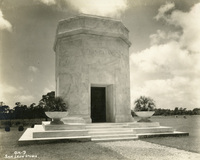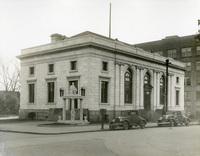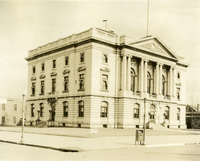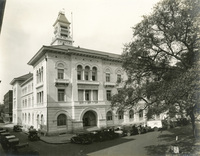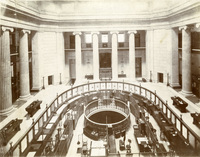Georgia Marble Company Records, circa 1910 - 2004
In the early nineteenth-century, an Irish stonemason named Henry T. Fitzsimmons noticed outcroppings of marble in select areas of northern Georgia. While Fitzsimmons did play a pivotal role in galvanizing interest in Georgia’s marble deposits during this period, he did not discover them. Etowah Native Americans, and perhaps other American Indian tribes, used Georgia marble deposits to create statues and relics during the fourteenth century. However, it was not until the 1840s that utilization of Georgia marble began to increase - a phenomenon that was largely due to Fitzsimmons and the opening of his own marble business called “Long Swamp Marble Company.” Years later, businessmen named Henry C. Clement, Frank H. Sidall, and O.F. Bane also became intrigued by Georgia’s wealth of marble deposits and established the Georgia Marble Company in May 1884, with Henry C. Clement serving as president of the company. Around the same time, another businessman named Samuel Tate purchased tracts of land in Pickens County, Georgia, and these land tracts also contained large deposits of marble. He too became a partner in the Georgia Marble Company. During the early twentieth century, Georgia Marble Company was aggressive with local expansion. In 1916 and 1917, the Georgia Marble company purchased the Blue Ridge Marble Company, the George B. Sickels Marble Company, the Amicalola Marble Company, the Kennesaw Marble Company, and the Southern Marble Company. The Georgia Marble Company operated until 1968 when Jim Walter bought the company for twenty-three million dollars in 1969. The company changed ownership many times until it was finally purchased by Polycor in 2003.
The digital reproductions on this site are provided for research consultation and scholarly purposes only. The Archives has made every effort to describe what is known about copyright, rights of privacy and confidentiality, publicity, or trademark in its holdings. The copyright status for this item has been deemed unknown. The Archives may not grant permission to publish, reproduce, publicly display, broadcast, or distribute this material outside the boundaries of fair use.
Recent Submissions
-
-
A Profile of Excellence
(2022-04-27)Video detailing the history of Georgia marble as a material and its uses. -
Marble-Faced Precast Panels
(2022-04-27)Commercial product video on marble-faced precast concrete panels -
Unknown building
(2019-05-30) -
United States Post Office, Tampa, Florida
(2019-05-30) -
Shedd Aquarium, Chicago, Illinois
(2019-05-30) -
United States Post Office, Savannah, Georgia
(2019-05-30) -
Ringling mausoleum, Sarasota, Florida
(2019-05-30) -
New York courthouse under construction
(2019-05-30) -
New York Trust Company building, New York
(2019-05-30) -
United States Post Office, Gainesville, Georgia
(2019-05-30) -
Bronx County courthouse under construction, New York
(2019-05-30) -
United States Post Office, Macon, Georgia
(2019-05-30) -
United States Post Office, Savannah, Georgia
(2019-05-30) -
United States Post Office, Chattanooga, Tennessee, 1932
(2019-05-30) -
Christopher Columbus Memorial Fountain, Washington, D.C.
(2019-05-30)










